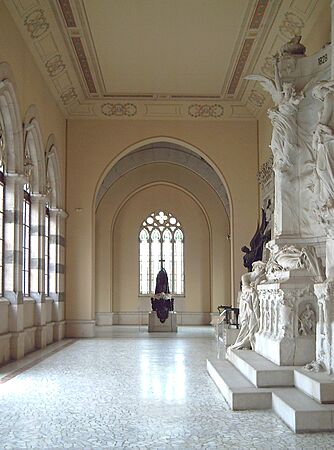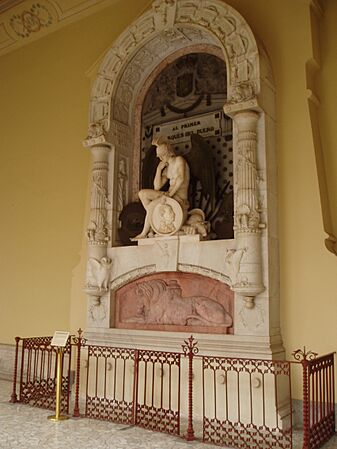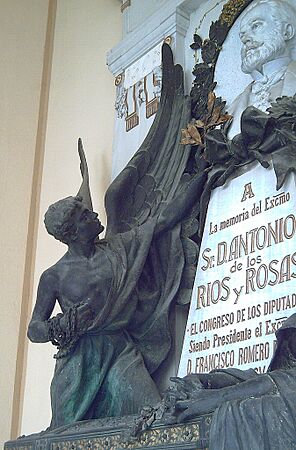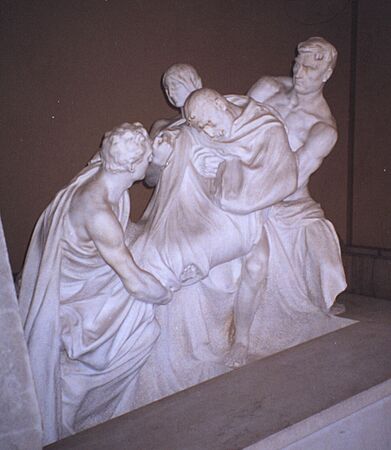Pantheon of Illustrious Men facts for kids
Quick facts for kids Pantheon of Illustrious Men |
|
|---|---|
|
Panteón de Hombres Ilustres
|
|
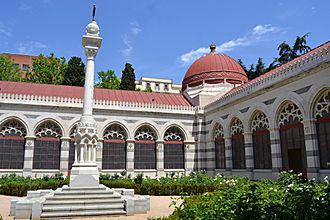 |
|
| General information | |
| Location | Madrid, Spain |
| Owner | Patrimonio Nacional |
| Official name: Panteón de Hombres Ilustres | |
| Type: | Non-movable |
| Criteria: | Monument |
| Designated: | 1992 |
| Reference #: | RI-51-0007311 |
The Pantheon of Illustrious Men (which means "Pantheon of Famous Men" in Spanish) is a special building in Madrid, Spain. It's a place where important Spanish people are buried. This building is managed by a group called Patrimonio Nacional, which looks after royal sites and historical places in Spain. A Spanish architect named Fernando Arbós y Tremanti designed it. You can find the Pantheon in the Retiro area of Madrid, near the Basilica of Nuestra Señora de Atocha.
Who is Buried Here?
The Pantheon holds the tombs of many famous Spanish people. These individuals were important leaders, writers, and thinkers who helped shape Spain's history.
Here are some of the notable people buried there:
- Leandro Fernández de Moratín (1760-1828): A well-known writer of plays.
- Francisco de Paula Martinez de la Rosa (1789-1862): He served as a prime minister, a top government leader.
- Juan Álvarez Mendizábal (1790-1853): An important politician.
- Antonio de los Ríos y Rosas (1812-1873): Another key politician. His tomb was designed by Pedro Estany.
- Práxedes Mateo Sagasta (1825-1903): A prime minister whose tomb was created by the sculptor Mariano Benlliure.
- Antonio Cánovas del Castillo (1828-1897): Also a prime minister. His tomb was made by Catalan sculptor Agustí Querol Subirats.
- Eduardo Dato e Iradier (1856-1921): A prime minister, with a tomb by sculptor Mariano Benlliure.
- José Canalejas (1854-1912): Another prime minister, whose tomb was also made by sculptor Mariano Benlliure.
Special Statues and Tombs
The Pantheon also has other interesting structures. One of these is a statue of Liberty, which represents freedom. This statue was part of a tomb from 1857. Sculptors Federico Aparici, Ponciano Ponzano, and Sabino Medina designed it. It was moved to the Pantheon in 1912.
Gallery
-
The tomb of Antonio de los Ríos y Rosas
-
The tomb of Eduardo Dato
-
The tomb of José Canalejas
-
The tomb of Antonio Cánovas
See also
 In Spanish: Panteón de España para niños
In Spanish: Panteón de España para niños


